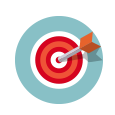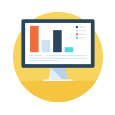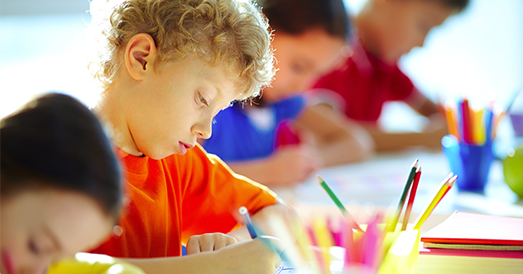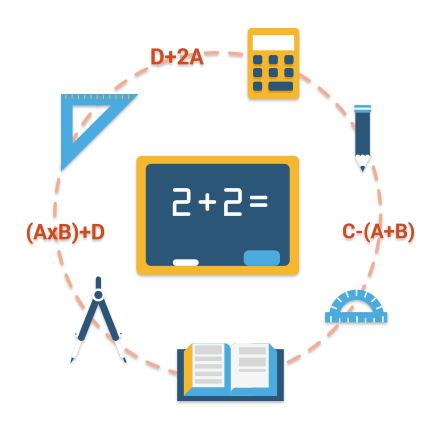Year 3 Maths
After completing Key Stage 1, in year 3 you will begin Key Stage 2 mathematics where your learning skills will start to develop further. You will continue to master your addition, subtraction and multiplication skills however at Key Stage 2 you will you will begin to incorporate larger numbers, between 100 to 999. One of the new things that you will learn at Key Stage 2 is the relationship between the common units of capacity; the litre and the millilitre, as well as being able to estimate, measure and compare the capacity of containers. The biggest difference between Key Stage 1 and Key Stage 2 is that you will now be expected to add and subtract using fractions, rather than just being able to order them as in Key Stage 1. You will also learn how to formulate the area and perimeter of using the formula unit of the centimetre in Key Stage 2 maths and you will continue to learn these at Year 4 Maths and Year 5 Maths.
.Popular Maths Curriculum Courses in England.
Key Stage 2
Year 4 Maths
Topics include multiplication using extended algorithms, introduction to decimals, comparing & ordering fractions to bar charts & pictograms.
Key Stage 2
Year 5 Maths
Year 5 introduces multiples and factors of whole numbers, reducing fractions to lowest equivalent form and rounding decimals amongst other topics.
Key Stage 2
Year 6 Maths
Algebraic equations, rounding decimals, dividing and multiplying fractions and problems with length, mass and area are all introduced in year 6.
Key Stage 3
Year 7 Maths
Topics include an introduction to the square centimetre, geometry transformations without matrices and statistic probability.



KS2 Maths Topics
#
TOPIC
TITLE
1
Calculation-larger numbers
The numbers 100 to 999
Objective: On completion of the lesson the student will be able to count to 999, skip count by 10s and 100s to 999 and use pictures or objects to represent the numbers 100 to 999.
2
Addition
Addition to 99
Objective: On completion of the lesson the student will be able to use place value to add two 2-digit numbers together up to a total of 99.
3
Addition
Addition up to the number 999
Objective: On completion of the lesson the student will be able to use place value to solve and record addition problems with three digit numbers.
4
Subtraction
Subtraction up to the number 99
Objective: On completion of the lesson the student will know how to find the answer to take away number sentences with bigger numbers and will also know how to write these number sentences.
5
Subtraction
Subtraction with borrowing
Objective: On completion of the lesson the student will be able to record subtraction number sentences and will understand the need to trade between place value columns using the renaming method
6
Subtraction
Subtraction of two-digit numbers Involving comparison.
Objective: On completion of the lesson the student will know how to solve and record the answer to word problems and will understand how estimation helps to find out if an answer is correct.
7
Calculation-multiples
Multiples of 10 up to 100
Objective: On completion of the lesson the student will be able to read, write, rename and add multiples of ten.
8
Multiplication
Multiplication – important facts.
Objective: On completion of the lesson the student will know the connection between multiplication and division and recognise the strategies to help solve multiplication number sentences.
9
Multiplication
Multiplication using extended algorithms.
Objective: On completion of the lesson the student will have understood multiplication using extended algorithms.
10
Multiplication
Multiplying 2-digit numbers by multiple of 10
Objective: On completion of the lesson the student will be able to multiply any 2 digit number by any multiple of 10 using the process of long multiplication.
| # | TOPIC | TITLE | |
|---|---|---|---|
| 1 | Calculation-larger numbers | The numbers 100 to 999 | |
| Objective: On completion of the lesson the student will be able to count to 999, skip count by 10s and 100s to 999 and use pictures or objects to represent the numbers 100 to 999. | |||
| 2 | Addition | Addition to 99 | |
| Objective: On completion of the lesson the student will be able to use place value to add two 2-digit numbers together up to a total of 99. | |||
| 3 | Addition | Addition up to the number 999 | |
| Objective: On completion of the lesson the student will be able to use place value to solve and record addition problems with three digit numbers. | |||
| 4 | Subtraction | Subtraction up to the number 99 | |
| Objective: On completion of the lesson the student will know how to find the answer to take away number sentences with bigger numbers and will also know how to write these number sentences. | |||
| 5 | Subtraction | Subtraction with borrowing | |
| Objective: On completion of the lesson the student will be able to record subtraction number sentences and will understand the need to trade between place value columns using the renaming method | |||
| 6 | Subtraction | Subtraction of two-digit numbers Involving comparison. | |
| Objective: On completion of the lesson the student will know how to solve and record the answer to word problems and will understand how estimation helps to find out if an answer is correct. | |||
| 7 | Calculation-multiples | Multiples of 10 up to 100 | |
| Objective: On completion of the lesson the student will be able to read, write, rename and add multiples of ten. | |||
| 8 | Multiplication | Multiplication – important facts. | |
| Objective: On completion of the lesson the student will know the connection between multiplication and division and recognise the strategies to help solve multiplication number sentences. | |||
| 9 | Multiplication | Multiplication using extended algorithms. | |
| Objective: On completion of the lesson the student will have understood multiplication using extended algorithms. | |||
| 10 | Multiplication | Multiplying 2-digit numbers by multiple of 10 | |
| Objective: On completion of the lesson the student will be able to multiply any 2 digit number by any multiple of 10 using the process of long multiplication. | |||
See More Topics Covered in Year 3 Key Stage 2 Maths
..









